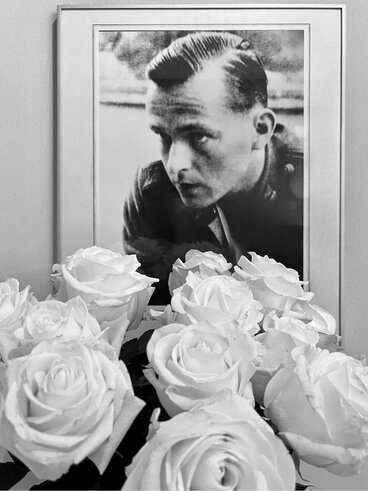
"Each individual bears all the responsibility. But for us, it's the duty to face the doubt and take a clear direction at some point."
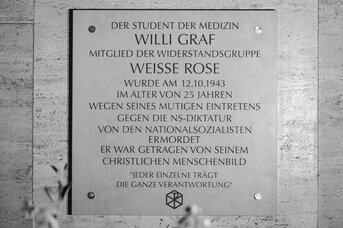
Willi Graf was born on January 2, 1918 in Kuchenheim in the Euskirchen district and grew up in Saarbrücken in a Catholic home. In 1929, Willi Graf joined the boys' group of the Catholic student association "Neudeutschland" and became an ensign leader there in 1933. After the dissolution of denominational youth associations, decreed by National Socialism, he joined the Grey Order in 1934, which developed from former members of the southwest German Bündischer. In this circle, Willi received decisive impulses. His conviction grew, to consistently refuse the regime. He never joined the Hitler Youth, despite all threats and coercion. (Due to his participation in illegal trips, camps, and meetings, he was imprisoned for three weeks in January 1938, and, together with 17 other members of the "Gray Order," was tried before the Mannheim Special Court for Bündischer Umtriebe).
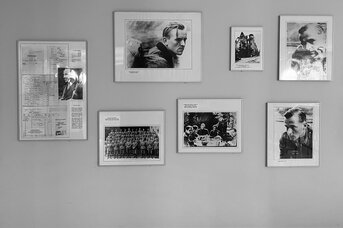
After six months of compulsory service in the Reich Labor Service, Willi Graf began his medical studies in Bonn in the winter semester of 1937/38.
In January 1940, he was drafted into the Wehrmacht as a medic. In Yugoslavia, Poland, and Russia, he experienced the hardship of the civilian population during the war, heard about wartime atrocities, and the murder of Jews.
After April 1942, he was able to continue his studies in Munich in the 2nd Student Company. In mid-June 1942, he met Alexander Schmorell, the Scholl siblings, Christoph Probst, and later Prof. Kurt Huber.
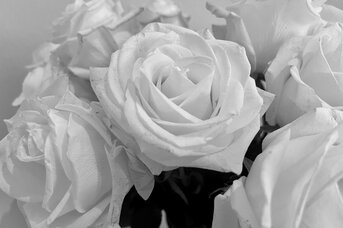
In July 1942, together with Hans Scholl and Alexander Schmorell, who had already written and distributed the first "Weiße Rose" leaflets in June, he was assigned to the Eastern Front for three months. Graf, Schmorell, and Scholl returned to Munich for the winter semester of 1942/43. Willi had finally decided to join the resistance actions of the "Weiße Rose". He helped to produce and distribute the V. and VI. leaflets and painted freedom slogans on public buildings at night with Hans Scholl and Alexander Schmorell. He took on the task of expanding the resistance beyond Munich.
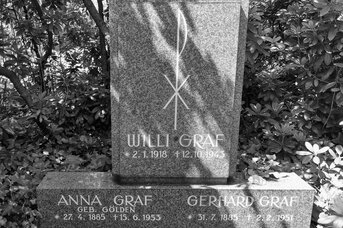
After the arrest of the Scholl siblings, Willi Graf was arrested in their shared apartment on the evening of February 18, 1943, together with his sister Anneliese, who was also studying in Munich.
On April 19, 1943, the People's Court under Roland Freisler sentenced him to death. After the Gestapo had spent months trying to extract names of confidants from Willi Graf, he was executed by guillotine on October 12, 1943.
White Rose Memorial
A permanent exhibition shows the history of the student resistance group "White Rose", who resisted the Nazi dictatorship mainly through leaflets. There is a reference library, documentation, and an exhibition on the White Rose. Guided tours for groups and eyewitness talks can be arranged by appointment.
A black memorial stone, honoring the White Rose, in the courtyard garden at the State Chancellery, commemorates the contents of the leaflets.
Open: Monday through Friday from 10 a.m. to 4 p.m., Geschwister-Scholl-Platz 1, Munich.
White Rose Foundation
The foundation celebrated its 20th anniversary in 2007, under the motto "Remember and Act." Further information can be found at: White Rose Foundation
In cooperation with the White Rose Stiftung e.V. and the Bavarian State Ministry of Justice, an exhibition on the trials of the Weiße Rose resistance group in Munich, in 1943, has been created under the title "Arbitrariness - In the Name of the German People".
On February 22, and April 19, 1943, the first two trials of members of the student resistance group White Rose took place in the Palace of Justice in Munich before the People's Court, presided over by Roland Freisler. Sophie and Hans Scholl, Christoph Probst, Alexander Schmorell, Prof. Kurt Huber, and Willi Graf were sentenced to death, and eleven other defendants were sentenced to long prison terms. The indictment, trial, and sentencing were pure arbitrariness.
Special exhibition Traute Lafrenz and the Weiße Rose
In 2006, the Weiße Rose Foundation presented a special exhibition on Willi Graf in the Rose Memorial. In 2007, an exhibition on Prof. Kurt Huber, and until the end of 2008 another special exhibition payed tribute to Traute Lafrenz, as a central figure of the resistance group.
The exhibition about Traute Lafrenz counteracted an imbalance, because Lafrenz's influence and participation in the leaflet campaigns of the resistance group received little attention, until now. Yet, Dr. Taute Lafrenz-Page, as a young medical student and close friend of Hans Scholl, played an essential role in the dissemination of the leaflets in Hamburg. Especially, text passages of the fourth leaflet of the Weiße Rose can be traced back to her personal influence.
In April 1943, Lafrenz was sentenced by Roland Freisler to one year in prison for "connivance". She had succeeded in concealing her actual involvement in the leaflet distribution during interrogations by the Gestapo. After her release, she was again remanded in custody in the course of the investigations against the Hamburg branch of the Weiße Rose. She was in various prisons until the end of the war. In 1947, she emigrated to the USA. She worked as a doctor at a curative education clinic and now lives in South Carolina.
Munich City Museum ("Münchner Stadtmuseum")
Open Tuesday through Sunday, 10 a.m. to 6 p.m. On display is the permanent exhibition "Ciphers of Memory - National Socialism in Munich." The exhibition highlights Munich as the place of origin of the emergence of National Socialism and party center, as well as Munich's involvement as a city of art and festivities in the trivialization of the Nazi regime, and as a media and armaments location. Another aspect is set on Munich as a starting point and action place of persecution and resistance. This includes references to Willi Graf and the Weiße Rose. Information material: Accompanying the exhibition, a city map on Nazi topography 1918-1945 was published, linking the exhibition to the urban environment (2 €). The exhibition catalog "Munich - Capital of the Movement" is available again as a reprint (22 €). It is worth a visit. Permanent exhibition Ciphers of Memory
Address: St.-Jakobs-Platz 1, Munich
Memorial Center "Deutscher Widerstand"
If you ever visit Berlin, you should stop by the German Resistance Memorial Center (in the Bentlerblock in Berlin-Mitte). We would especially like to refer you to the extensive bibliography on the resistance against National Socialism.